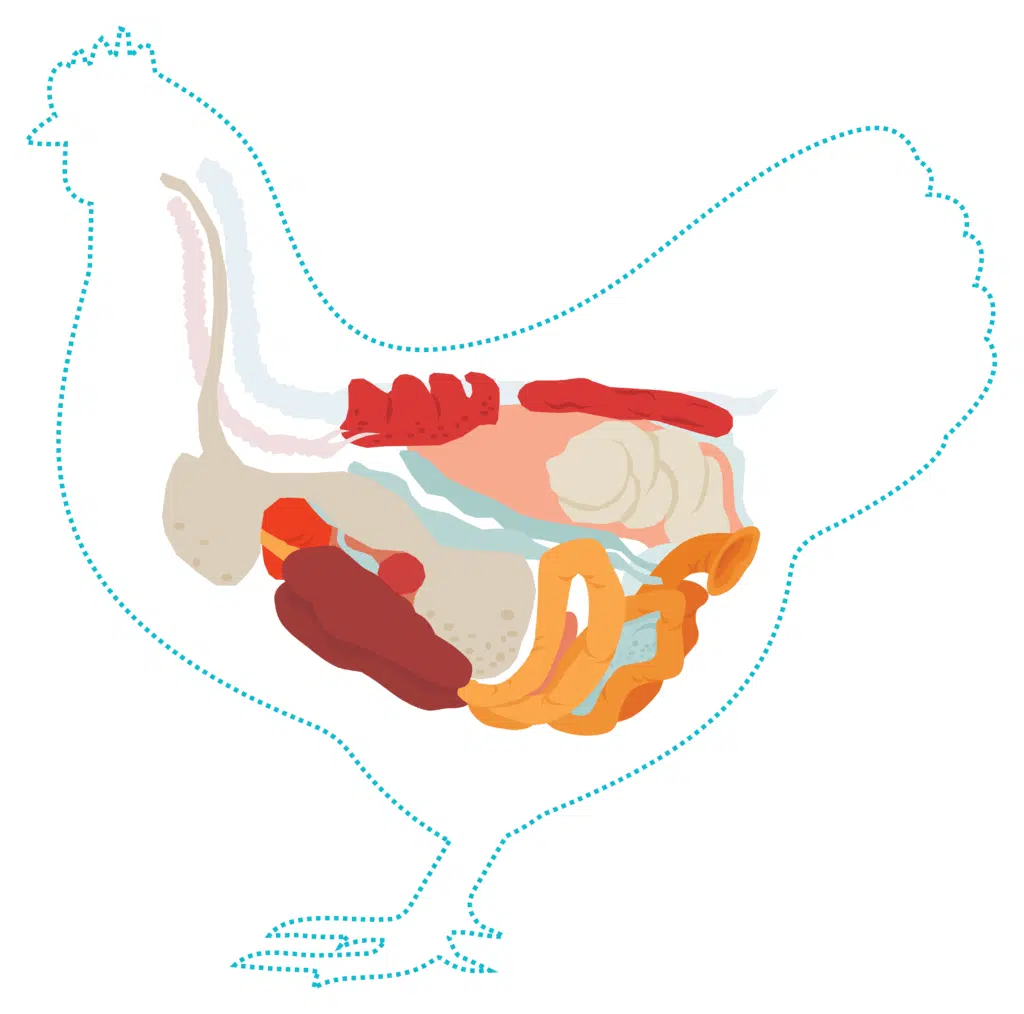Last month, we discussed the increasing demand for poultry meat due to both population growth and an increase in per capita consumption, and its related effect on the incidence of production diseases in poultry production systems. One important factor in identifying cost-effective solutions to these production diseases is understanding the interactions between the poultry gastrointestinal tract (GIT) and the animal’s immune function, and how feed additives may impact this.
The GIT and immunity
The gastrointestinal tract (GIT) is an indispendable organ of the chicken’s mucosal immune system that has developed to carry out two opposing tasks: nutrient absorption and pathogen defense.
The intestinal immune system includes a robust mucosal layer, tightly interconnected intestinal epithelial cells, secreted soluble immunoglobulin A (IgA), and antimicrobial peptides (AMP). Improved intestinal integrity and tight junctions reduce the risk of pathogenic microbes crossing between the gut cells and into the blood, supporting the GIT in performing its task of pathogen defence.
Several scientific studies have been conducted to try and understand the complex interactions between the gut microbiota and immune response in poultry. These studies have found differences in the mucin profile and the number of various cells associated with the immune system between germ-free chickens and conventional chickens and concluded that the differences were due to differences in the microbiomes of the two groups. In a separate study, the diversity of poultry gut microbiota has also been shown to affect the complexity of the T-cell receptor range in both the gut and the spleen.
In addition to directing the production of molecules important for the immune system, such as cytokines and chemokines, and influencing the T-cell range of the GIT, the gut microbiota also modulates the response of immune system cells and IgA production, as mentioned above. IgA supplied into the GIT plays a critical role in the binding and elimination of harmful microorganisms.
The gut microbiota regulates the production of AMP, which rapidly kill or inactivate microorganisms. As an important component of the innate immune system, AMP provide immediately effective, non-specific defenses against harmful microorganisms.
AMP provide an appealing alternative to conventional antibiotics because of their natural antimicrobial properties and a low propensity for the development of bacterial resistance. In addition, AMP have a broad spectrum of activity, low level of induced resistance, and immunomodulatory properties.
Prebiotics and DFM
Other feed additives that can have a positive influence on the gut microbiota and its interaction with the immune system include direct-fed microbials (DFM). Many studies have been conducted to evaluate the effect of DFM on the immune function of poultry. DFM containing multiple strains of microbes showed better effects on local and systemic immune responses and competitive exclusion compared to single-strain DFM. One such study reported that in the caecal tonsil cells of chickens, one microbe can induce T-helper cytokines whereas a microbe from a different family can induce an antiinflammatory response more effectively. Another study proved that day-old chicks were able to mount an effective immune response against infections by Salmonella ssp. when they were administered the complex microbiota of older chicks.
Prebiotics are non-digestible feed components that can change the makeup and metabolism of gut microbiota selectively. Prebiotics have the capability to increase the number of bifidobacteria and other species in the GIT that can affect the health of the host positively. In a study where B-glucan was fed as a prebiotic, birds were found to have an increased resistance to a Salmonella spp. challenge by increasing the number of IgA-secreting cells, the IgG level, and the action of goblet cells, causing immunomodulation to help birds to boost their immune system. Prebiotics can also increase the number of the lactic acid bacteria in the gut that assist in the competitive
exclusion of harmful microorganisms. They increase the production of short-chain fatty acids, leading to an acidic environment in the gut that supresses the growth of harmful microorganisms. The rapid clearance of armful microorganisms is an effective way to boost the immune system of poultry.
Prebiotics and DFM have similar modes of action to maintain the positive balance of the gut microbiota and utilising the products in combination has a synergistic effect on poultry gut health, especially during challenging times.
Next month we will take a closer look at the interactions between the microbiome present in the gut and nutrition, and how feed additives may impact on this, so watch this space!
Make sure you also read Part 1: The demand for poultry meat and Part 3: The microbiome and nutrition in this series.









